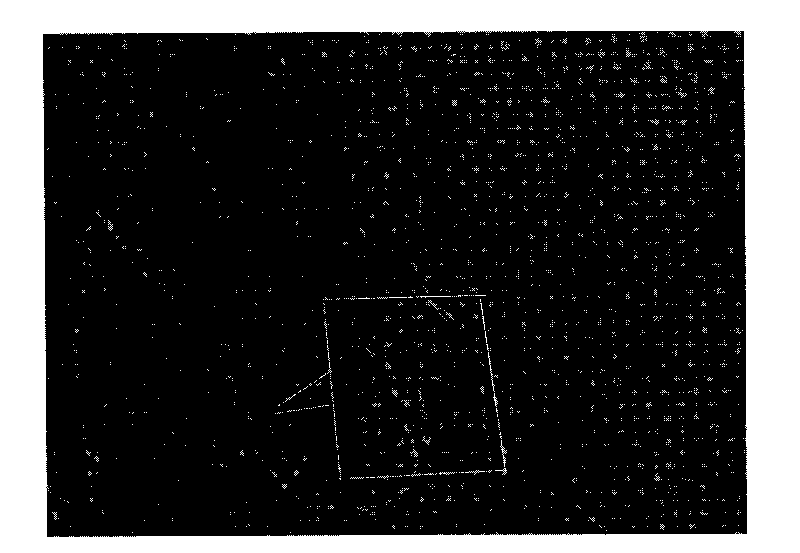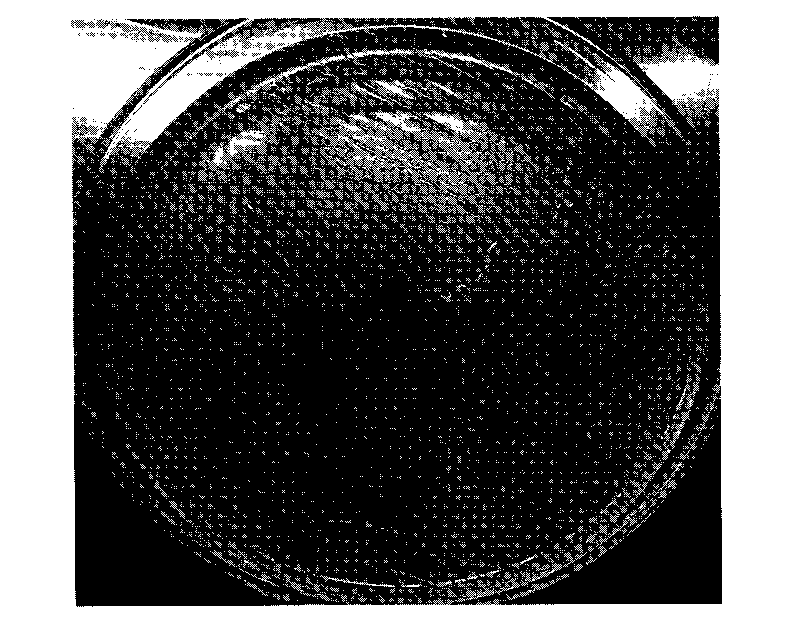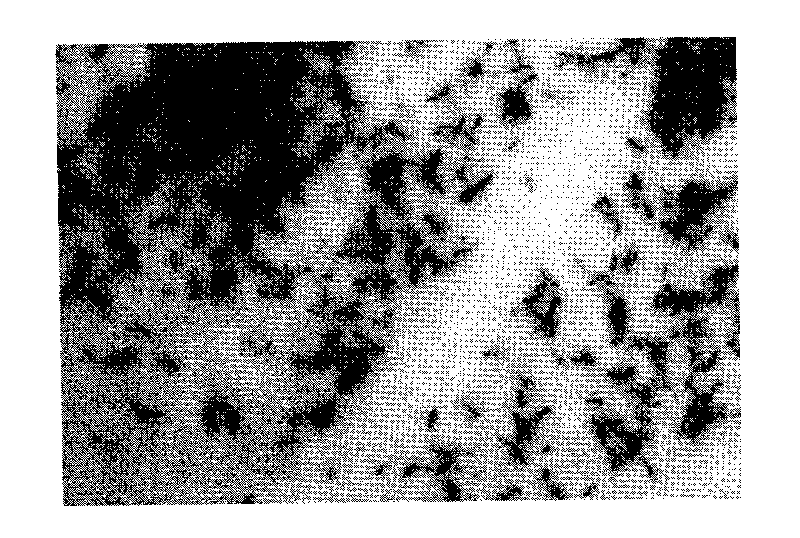Bradyrhizobium sp.RY4 strain and application thereof
A technology of strains and nodules, applied in the direction of bacteria, organic fertilizers, microorganisms, etc., can solve the problems of not achieving the effect of increasing yield, not being able to adapt well to the planting conditions of styli, and achieving the effect of increasing yield
- Summary
- Abstract
- Description
- Claims
- Application Information
AI Technical Summary
Problems solved by technology
Method used
Image
Examples
Embodiment 1
[0036] Example 1 The acquisition and cultivation of Rhizobium RY4
[0037] In November 2008, the inventor collected a root nodule of a luxuriant flower and grass from the mango field (E101. 46.137'N26.25.276 H1100) in the sticky soil of Panzhihua, Sichuan, cut off the aboveground part of the stylophyllum, and packed the whole root system together with the root nodule. Put it in a fresh-keeping bag and store it in an ice pack at low temperature. A nitrogen-fixing bacteria strain RY4 (Bradyrhizobium sp. RY4) was obtained after isolation and purification, and was deposited in China Center for Type Culture Collection on November 13, 2009, with the preservation number CCTCC NO: M 209268.
[0038] (1) Take out the root system of Stylophyllum from the ice pack and rinse it 2 to 3 times under tap water to clean the root system. Use scissors to cut off the fresh, complete, dark red root nodules with 2 mm in color and place them in a petri dish with grade 2 water. The surface is rinsed...
Embodiment 2
[0061] Example 2 The 16S rDNA sequence sequencing of Rhizobium RY4 and the determination of its category
[0062] In order to determine the phylogenetic status of Rhizobium RY4, the 16SrDNA series of the isolated strains were sequenced. Firstly, total DNA was extracted using a kit from Omega, and then PCR-specific amplification was performed using primers.
[0063] Upstream primer 35fc: CTKAAGAGTTTGATCMTGGCTCAGATTGAAC;
[0064] Downstream primer 1492r: TACGGYTACCTTGTTACGACTT.
[0065] The reaction conditions are as follows:
[0066] PCR reaction
[0067] Primer: 35fc, 1492r
[0068] PCR recipe:
[0069] 10×Reaction Buffer 5.0μL
[0070] dNTPs (10mM) 1.0μL
[0071] P35fc (25Pmol) primer 0.5μL
[0072] P1492r (25Pmol) primer 0.5μL
[0073] Taq DNA polymerase (5u / μL) 1.0μL
[0074] Template DNA 1.0 μL
[0075] Make up to 41 μL with ultrapure water
[0076] PCR procedure
[0077] Pre-denaturation at 94°C: 3min
[0078] Denaturation at 94°C for 50s
[0079] 56℃...
Embodiment 3
[0084] Example 3 Application experiment of rhizobia RY4
[0085] In order to confirm the effect of RY4 on Stylophyllum, two Stylophyllum varieties (TPRC2, TPRC5) were used, and the root nodules RY4 were reattached to the roots of Stylophyllum by sand culture method, with 4 replicates for each treatment (bacteria, sand and seedlings). For treatment, refer to the backgrain experiment procedure), and nodule inoculation was used as the control (CK) for backgrain comparison. The whole process is irrigated with low-nitrogen nutrient solution. The physiological indicators of Stylophyllum TPRC2 and TPRC5 back-inoculated with Rhizobium RY4 are shown in Table 2 and the appendix Figure 8 . attached Figure 8 The middle left square column (a) is TPRC2, and the left square column (b) is TPRC5 (attached Figure 8 Other square bar graphs in the middle are existing rhizobia control results, which are not directly related to the technology of the present invention, and are not marked).
...
PUM
 Login to View More
Login to View More Abstract
Description
Claims
Application Information
 Login to View More
Login to View More - R&D
- Intellectual Property
- Life Sciences
- Materials
- Tech Scout
- Unparalleled Data Quality
- Higher Quality Content
- 60% Fewer Hallucinations
Browse by: Latest US Patents, China's latest patents, Technical Efficacy Thesaurus, Application Domain, Technology Topic, Popular Technical Reports.
© 2025 PatSnap. All rights reserved.Legal|Privacy policy|Modern Slavery Act Transparency Statement|Sitemap|About US| Contact US: help@patsnap.com



